
MAGAZINE MAY 2023
GEMINI
where did he go? BREAKING THROUGH THE SCENE
Inside Look At Inhaler’s Journey and Unique Sound
STARS
Tinseltown’s Newest Superstars
THE SCENES
Mind Of Your Favorite Singer’s Stylists Listen to the Professionals How to have the Perfect Soiree
NICO NOVAK IS BACK But
An
THE AFTER PARTY ISSUE RISING
Meet
BEHIND
The

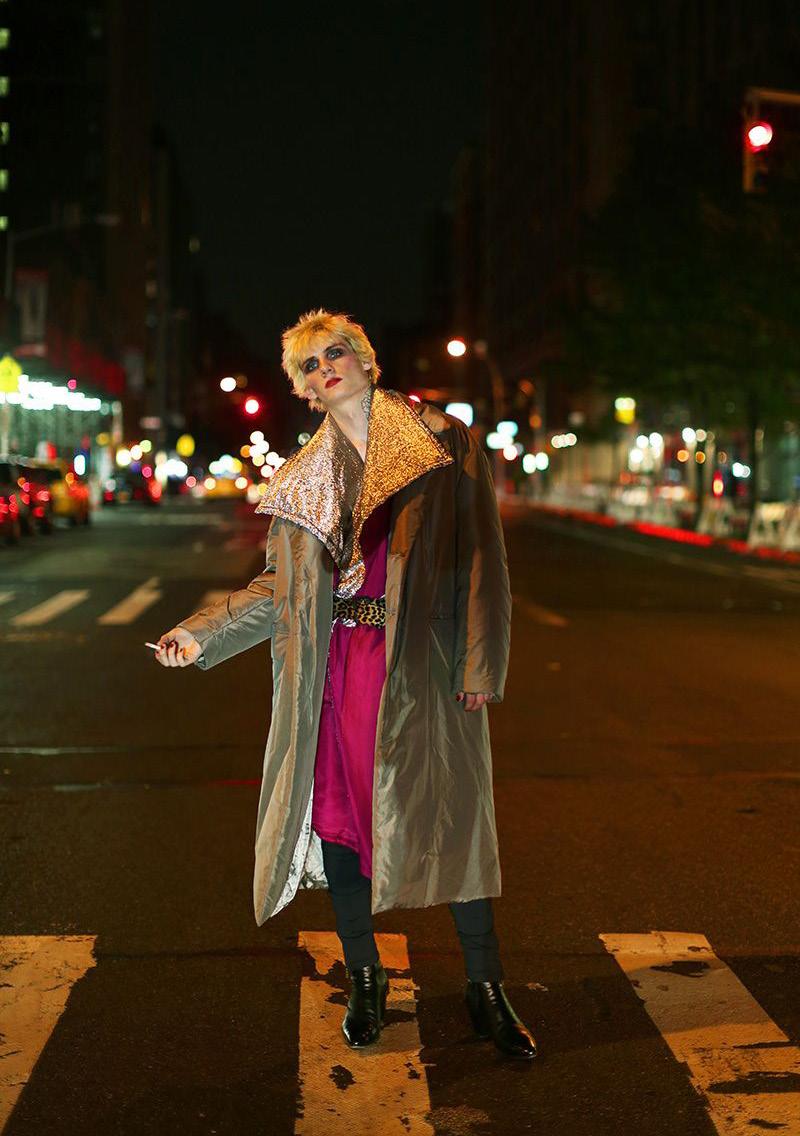

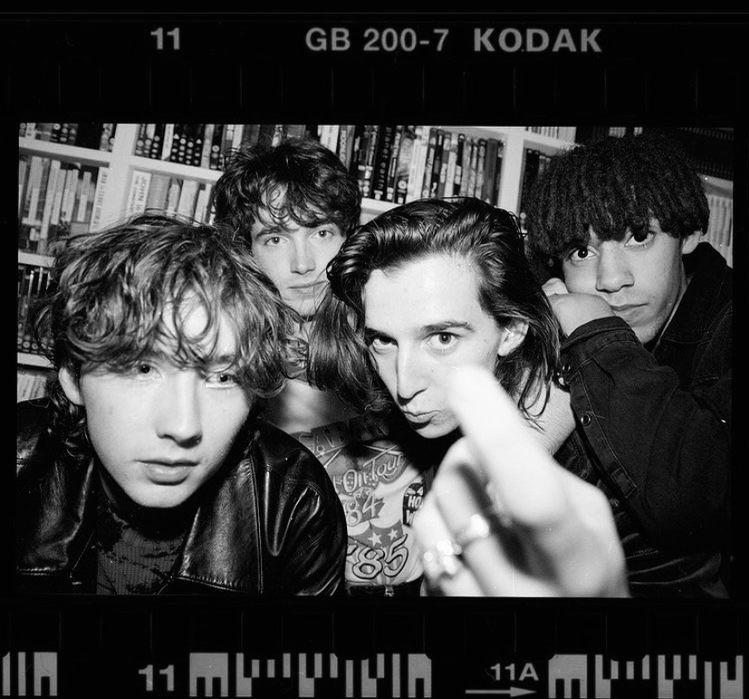
CONTENTS OF GEMINI 04 Taking It All Back Nico Novak’s Return to the City 10 Transforming Your Wardrobe How to Repurpose Your Old Clothes 12 Breaking Through The Scene An Inside Look at Inahler’s Journey & Unique Sound 2
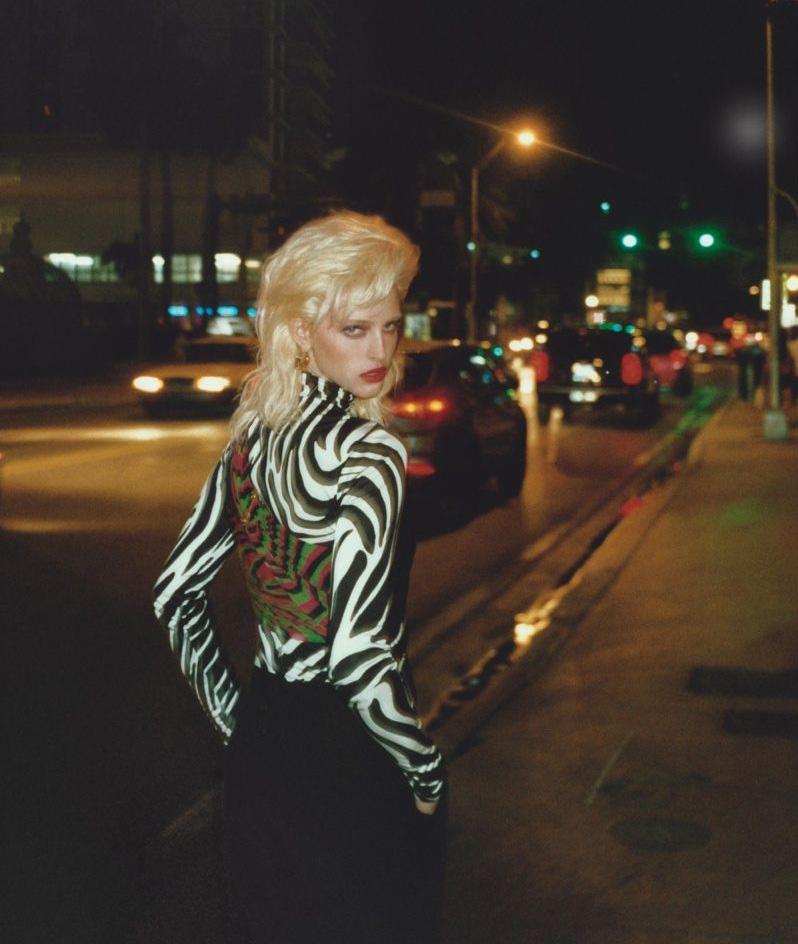
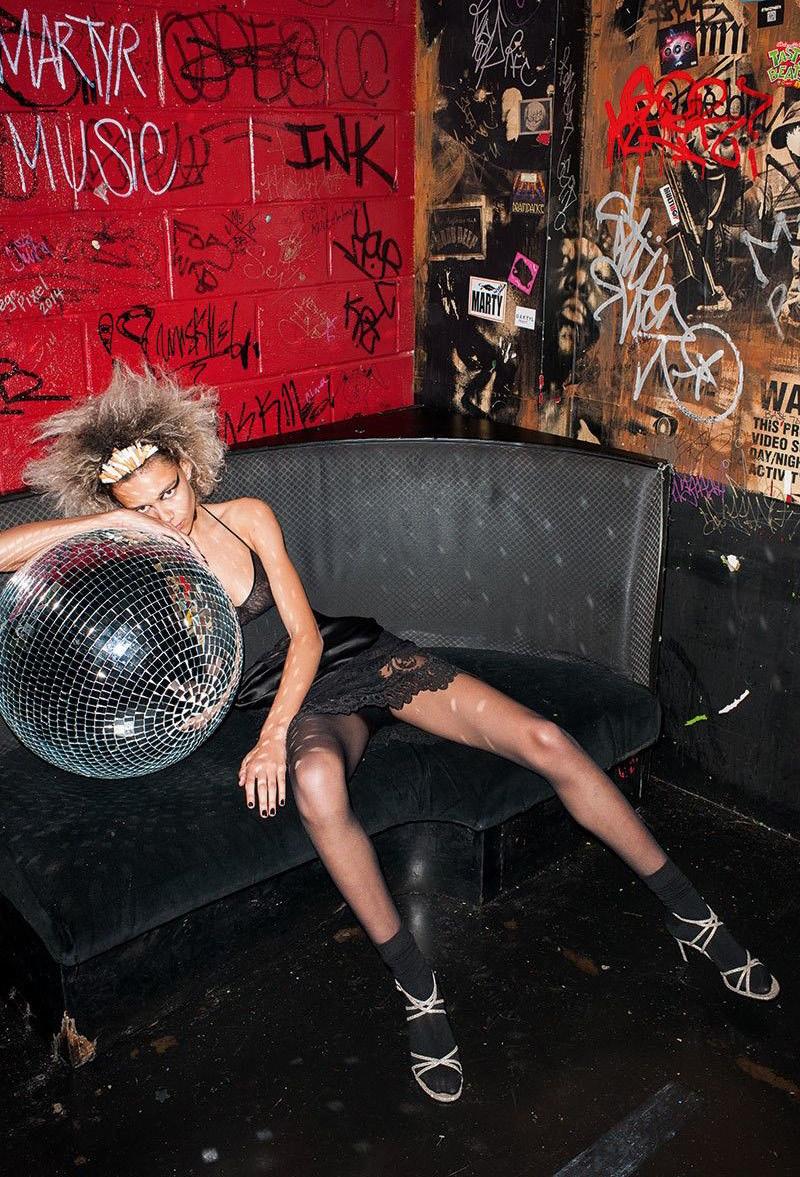
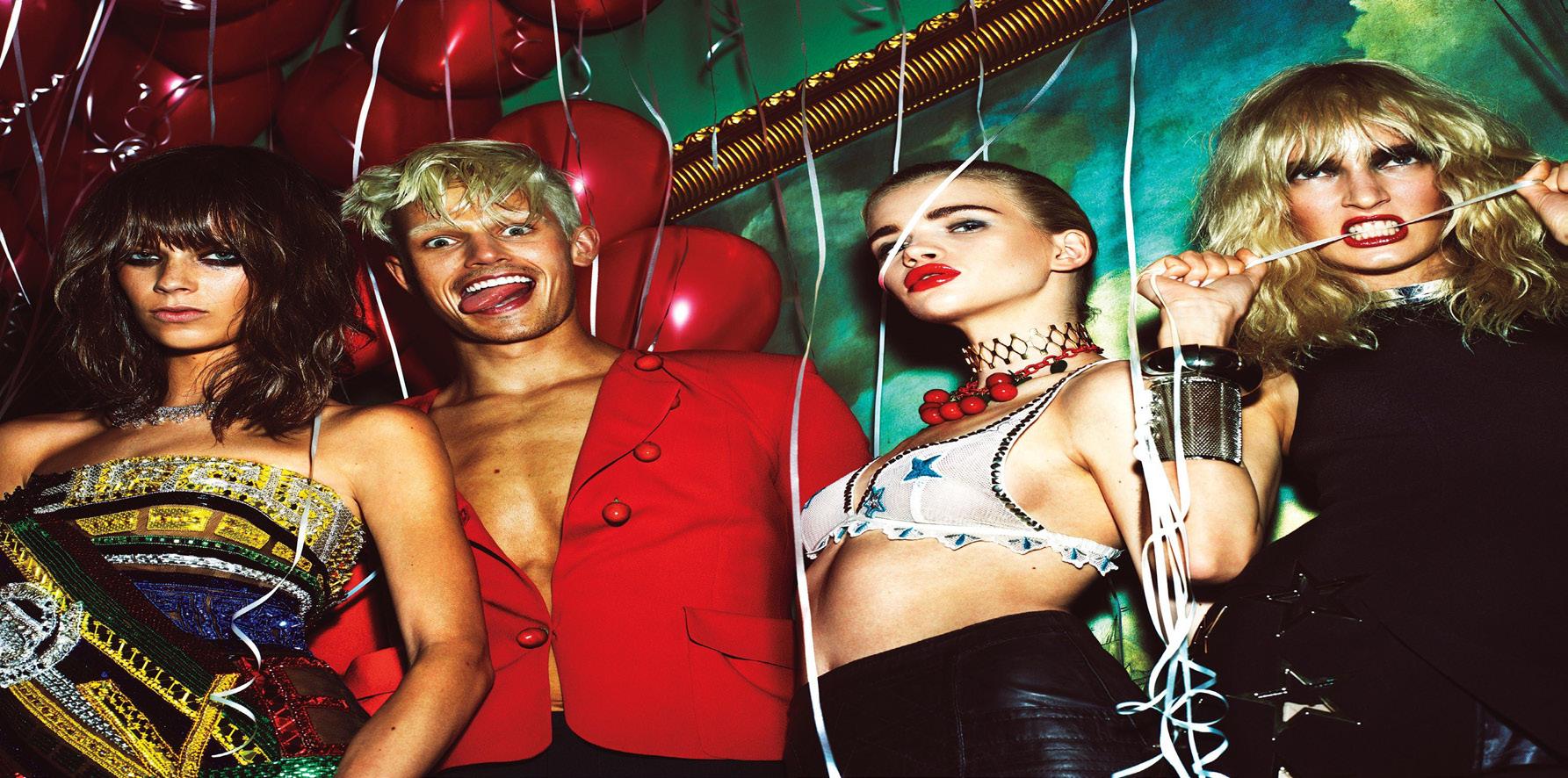

15 Editor’s Pick Gemini’s Fashion Must Haves 16 Fashion Meets Music The Stylists Behind Your Favorite Singers 18 RISING STARS A Look Inside Entertainment’s
On the outside, Delevingne has always played the beguiling mischief-maker. She shook up the modeling world as a wide-eyed 18-year-old schoolgirl from London, shooting to fame as the face of Burberry in 2011. Along with those magnificent caterpillar brows, her highspirited nature and wry sense of humor helped propel her to stardom over a decade when personality was all but shunned on the runway. Here was a young woman who was selfpossessed, even in the blinding glare of the spotlight—and her ascent to Hollywood with roles in films like Paper Towns (2015) and Suicide Squad (2016) only furthered that perception. On the inside, however, she was struggling to make sense of who she was. “If you have problems going into this industry, they will only get magnified and exacerbated,” says Delevingne.
TAKING IT ALL BACK: Nico Novak’s Return totheCity
ByEmmanuelGittins


“There is nothing about it that makes it better.” Still, few could have anticipated Delevingne’s all-too-public unraveling last September, shortly after her 30th birthday, when she was photographed looking disheveled and distressed at the Van Nuys Airport in Los Angeles. The tabloids were quick to draw comparisons to Delevingne’s 63-year-old mother, Pandora, who has talked about her struggles with bipolar disorder and heroin addiction. Then, just weeks later, defying all expectations, Delevingne appeared at a Paris Fashion Week event for a collaboration honoring her friend the late Karl Lagerfeld, looking coiffed and radiant. Fans were left wondering: Had the headlines about Delevingne’s so-called downward spiral been blown out of proportion? Was Cara okay or was she not? Delevingne describes those paparazzi photos as a source of overwhelming shame and embarrassment, and an urgent
wake-up call to step away from the substances and the alcohol that had long seduced her with their offer of escape, and to confront deeper personal issues that she’d been running away from. Delevingne had just returned from Burning Man—“I hadn’t slept. I was not okay,” she says—and was en route to a work engagement. “It’s heartbreaking because I thought I was having fun, but at some point it was like, Okay, I don’t look well.” She pauses to gather her thoughts, then continues. “You know, sometimes you need a reality check, so in a way those pictures were something to be grateful for.”
The tumultuous narrative arc of Delevingne’s interior life begins when she was a child born into a wealthy family—her father, Charles, a property developer, her socialite mother the daughter of Jocelyn Stevens, a Fleet Street executive, and Jane Sheffield, a lady-in-waiting to Prin-
4
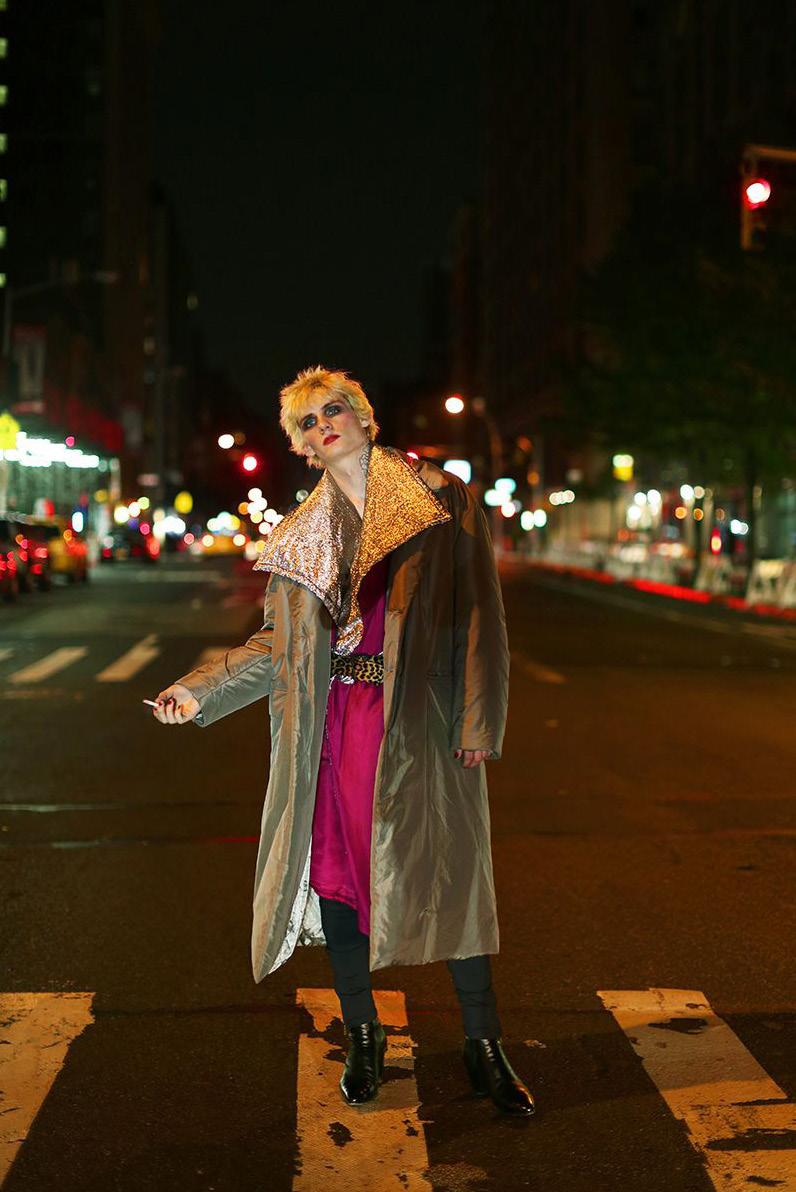
5
cess Margaret. “In a way, a lot of people have looked at my childhood or my family and thought, She’s spoiled, there’s nepotism, she grew up extremely privileged, which I did, don’t get me wrong,” she says. “But life wasn’t all that easy for other reasons.” Delevingne admits she’s still grappling with the history of addiction her mother has talked openly about. In 2017, Cara cowrote a young adult novel, Mirror, Mirror, that was informed by the maelstrom of her teenage years. It is no accident that the protagonist’s mother was an alcoholic. “For a long time, I didn’t really put myself in her shoes,” Delevingne says. “I just needed someone to be angry
at and I was angry at her, but it wasn’t her fault. The way that addiction took my mother from me was brutal, and it was brutal for her too.” She describes those paparazzi photos as a source of overwhelming shame and embarrassment, and an urgent wake-up call.
As a child, Delevingne was precocious, curious, and exceptionally bright. Though not academically gifted, she excelled in the arts. “She was always uniquely talented,” remembers Delevingne’s aunt, the author and editor Melinda Stevens. “Whatever she picked up—whether it
just could play it and nail it. She has a kind of prodigy-ish note in her. But even if she was quiet in moments, the inner whirrings of her mind were always churning away.” Delevingne attended Bedales, the well-known liberal arts boarding school in Hampshire, England, committing herself to drama and music, even as the emotional chaos of her upbringing continued to follow her. “I was happy as a kid for sure, but I think when I grew up, I looked back and realized, That’s not normal,” says Delevingne. “And then as a teenager, it just all came plummeting down. That’s also when I started drinking and partying. There was this need to escape and change my reality as I was hit with just huge questions: What am I doing here? Who am I trying to be?” She recalls her first experience with alcohol misuse at just seven years old, at a family wedding. “I woke up in my granny’s house in my bedroom with a hangover, in a bridesmaid’s dress,” says Delevingne. “I’d gone around nailing glasses of Champagne.” By the age of 10, she was prescribed sleeping pills to manage crippling insomnia. She was also diagnosed with dyspraxia, a disorder that affects movement and coordination. “This was the beginning of mental health issues and inadvertent self-harm,” she remembers, and led to various forms of therapy—“art therapy, music therapy, EMDR, CBT,” she says, rattling off the list. Then at 15, she suffered a breakdown, and was put on antidepressants to help her cope with her deep sense of isolation. “I was on medication and it just it saved my life,” she says. “This wasn’t a chemical imbalance as much as it was a full trauma response,” she adds. “I hadn’t uncovered the fucking hole inside, the real whirlpool within. And I still think there’s a part of diagnosis and labeling that is damaging. There were so many times that I was

6
there’s a part of diagnosis and labeling that is damaging. There were so many times that I was encouraged to take this or be put on that.” Now, she says, “I’m more of a naturalist, a purist in a sense, when it comes to medications.” Delevingne has weathered bouts of depression at various stages of her life, but in 2020, as the world went into lockdown, she hit a wall. “In the beginning, I was living with people in this COVID bubble in LA. We thought it was going to be a weeklong thing, and so it was fun.” She started her quarantine with Ashley Benson, her then girlfriend of almost two years. By April their relationship had ended. “And then I was alone, really alone it was a low point.” As each day bled into the next, she struggled to get out of bed. “I just had a complete existential crisis. All my sense of belonging, all my validation— my identity, everything—was so wrapped up in work. And when that was gone, I felt like I had no purpose. I just wasn’t worth anything without work, and that was scary,” she says. “Instead of taking the time to really learn something new or do something new, I got very wrapped up in misery, wallowing, and partying. It was a really sad time.”
As the world began to open up, Delevingne quickly fell back into her old patterns, throwing herself into work the first chance she could, and partying hard in her downtime. “I’m classically good at avoiding things,
been running from since I was a kid.” In the fall of 2021, on the heels of shooting the popular fantasy TV series Carnival Row in Prague, a project came along that required her to reveal herself in a way that she’d never done before: Planet Sex, the six-part docuseries exploring sexuality and gender recently released on Hulu. It acted on her as a kind of mirror. “It was super personal and I didn’t really realize how personal it would be,” says Delevingne, who remembers being moved to the point of tears at the end of her first day on location at the Dinah Shore Weekend in Palm Springs, billed as the world’s largest festival for queer women. “I’d only really learned how to show emotion when I was acting because I didn’t feel worthy enough to feel those things as myself. With Planet Sex, I was just so uncomfortable in front of the camera in the beginning because it was like, Oh, God, I’ve gotta be myself.” On the show, Delevingne unpacks the complexities of her queer identity. “I still struggle with being open—really open—about just how much I love women,” she says in the first episode, speaking directly to camera. Jessica Chermayeff and Ana Veselic, the couple who directed the docuseries, were instantly taken by this directness and her willingness to be vulnerable. “I think a lot of celebrities say they’re on a personal journey, but with her it was more than just lip service,” says Chermayeff. “She was scared in all the right ways.” Veselic concurs: “Cara was very open. Not everything was this perfect platitude statement, this neat little answer that checks all the boxes. There were definitely gray areas. As a viewer, I really miss that in conversations
she says. “And those are things I’ve
But there was still more personal turmoil to come: While filming Planet Sex in Tokyo the following spring, she received the crushing news that her grandmother Jane Sheffield had died. For Delevingne, Sheffield had always afforded her a rare safe space as a child—a place to be herself, a home and a garden to

“...justdidn’twant todealwithmy issues,”
7
play in. “I would stay with her in her house in the country. She looked after me a lot when my parents weren’t able to. When I heard she had died there were a lot of things I had to process because I hadn’t seen her since Christmas the year before. I was really trying to pour everything I had into work, and every night I would come back from filming and sit alone and just cry. By the time I got to the Met Ball two weeks later I was fucking exhausted.” When Delevingne, who suffers from psoriasis, walked the carpet of the gala covered in gold body paint, dry flaking patches of her skin were laid bare, visibly inflamed. “It was a sign of the major stress in my life,” she says, “that I couldn’t cope, that my body, this sensitive organ, couldn’t handle it.” But, she says, she didn’t hold
back at the after-parties. “I went and got blackout afterwards. It was like, What am I doing? The day after, I had to travel to my granny’s funeral. It was horrible.” And so she embarked on a summer of self-destructive and hedonistic revelry. “I always kind of knew that things were going to have to be different in my 30s, because the way that I was living was not sustainable,” she says As a last hurrah for her 20s, Delevingne planned a blowout Alice in Wonderland–themed birthday party, the crescendo to a three-week-long vacation in Ibiza. “I told myself, I should be having such a good time. I’ve got all my friends here. I need to be enjoying this. The house I was staying in had a tower and I would just kind of lock myself in it instead. I barely left the room.” She describes the feeling of

foreboding as like “a slowly beating drum inside.” “There was this need for change, but I was fighting it so much. I was welcoming in this new time but I was also grieving. It was like a funeral for my previous life, a goodbye to an era. And so I decided I was going to party as hard as I could because this was the end.”
Things came to a head when she flew from Europe to Nevada’s Black Rock Desert for
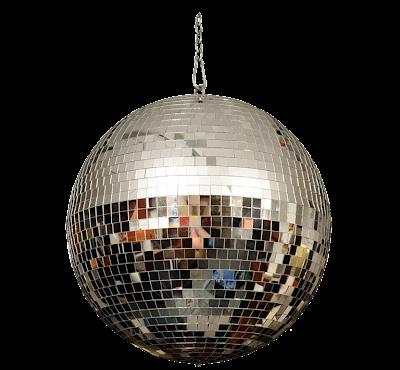
8
Burning Man. “There’s an element of feeling invincible when I’m on drugs,” she says. “I put myself in danger in those moments because I don’t care about my life,” she says. Her memories of that time are somewhat fragmented, refracted through substances that she doesn’t name, but aren’t hard to guess at—whatever would ramp her up and keep introspection at bay. She recollects being covered in inexplicable bruises. “I would climb anything and jump off stuff it felt feral,” she says. “It’s a scary thing to the people around you who love you.”
For members of Delevingne’s family, witnessing this brilliant yet deeply troubled young woman on the verge was painful. “It was scary, we were longing for something to change, but you can’t project that onto someone else,” says Stevens. “There were plans to do something about it, a lot of coordinating with her sisters and closest friends. We spent a lot of time with each other that summer, and it was reaching a pitch.” As her mother’s younger sister, Stevens shares a special bond with Delevingne, who is also the youngest of her siblings, Poppy and Chloe. “We’ve remained extremely close and connected whether we’re on opposite sides of the world or not,” Stevens says. She recalls a plane ride she took with Delevingne toward the end of her birthday celebrations as a major inflection point. “Obviously there have been highs and lows—huge highs and lows,” she says. “So I’m just extremely proud that she got to this new start of her own volition, because she’s so capable, she’s so strong.”
That fall, after the paparazzi photos came out, a tight group of Delevingne’s childhood friends, many of them Brits living in LA, rallied around her. Delevingne confesses that, at first, she struggled to make the most of the support. “I have so many friends,” she tells me. “They ride for me and I love my friends so much, but it felt like a lot of the time, they were shallow relationships only because I wasn’t able to be honest about the things I was going through. I didn’t want to burden anyone. It was also like, What if people leave? If you ask any of my friends, they would say they’d never seen me cry.” Meanwhile, she says a brand that had once lifted her up as a vocal mental health advocate was now shying away. Suddenly all the meaningful connections she’d made seemed more valuable than ever. “From September, I just needed support. I needed to start reaching out. And my old friends I’ve known since I was 13, they all came over and we started crying. They looked at me and said, ‘You deserve a chance to have joy.’ ” Those who have known Delevingne since before she was famous all point to her irrepressible verve. “Even if you don’t meet her in person, you can sense it through the lens,” says Stella McCartney. “Her charisma, it’s just not of this planet, is it?” says Sienna Miller, a family friend who first encountered Delevingne when she was a teenager and describes her as “the most special person I’ve ever met.” She recalls Delevingne’s early career in the nascent days of social media as extreme and high-octane. “I remember having lunch with her in New York, and just a million more people were following her on Instagram each day. It was really overwhelming because it came out of nowhere.” For Miller, the challenges that Dele vingne has faced are all too relatable. “In my 20s, I experienced complete chaos in my own life, because I didn’t know how to manage what was being flung at me. And for someone with that amount of fire and life in them, it can be really difficult,” Miller says. “For her to have reached this point, to have done the 180 and completely turned around and started walking in a different direction is astounding. Sobriety is a difficult road, and she’s made this step, she’s seen herself, and I think she is loving herself more than she’s ever loved herself.”
9
“I always kind of knew that things were going to have to be different in my 30s, the way that I was living was just not sustainable”
How To Repurpose Your Old Clothes
By Emmanuel Gittins
Upcycling clothes is easier than you think. Here’s how to take something old and DIY it into something new—for yourself and the planet. We all know the three Rs—reduce, reuse and recycle—but what about the “U” that no one talks about? Perhaps just as important as those Rs, the U stands for upcycling. While you can upcycle many things, from empty milk cartons to old furniture, you should turn your attention to your closet. Believe it or not, the average person wears a piece of clothing only seven to 10 times before discarding it. (Yikes!) But what if our mentality shifted toward fixing old clothes rather than throwing them out? If we all started to upcycle clothes more than we trashed them (or even recycled them), it would keep them out of the landfill, helping the environment and prolonging their shelf life.
If you’re new to upcycling or you’re curious about living more sustainably, it’s not nearly as intimidating as it may sound. You don’t need a sewing machine (though, yes, veteran sewers make handy upcyclers), and it doesn’t require a ton of money. In fact, you’ll likely save a bundle by upcycling. All you really need is some old clothing and a dash of creativity. It’s really that easy, and in no time, you’ll have a truly one-of-a-kind piece that’s also environmentally friendly. Whether new or old, you can also sell your unwanted stuff to do your bit for the environment.
What is upcycling? Upcycling, also

known as “creative reuse,” refers to the method of repurposing a used item into something else. You can upcycle an old milk carton into a birdhouse, or an egg carton into nontoxic fire starter, but in the context of upcycling clothes, it means taking an old piece of clothing that’s tattered, worn, broken, ripped or frayed and giving it new life so it can be worn or used again. “If you’ve heard the phrase ‘turning trash into treasure,’ that’s exactly what upcycling is,” explains Laura Wittig, CEO and founder of sustainable online platform Brightly. “Essentially, upcycling means taking something old—that would likely be destined for the landfill—and turning it into something new.”
In fact, upcycling clothes is having a real moment right now, thanks in part to Gen Z consumers prioritizing sustainability more than even brand names, according to a 2021 study from First Insight and Baker Retailing Center at Wharton School of the University of Pennsylvania. The hashtag #upcycledfashion is more popular than ever, with more than 427 million views on TikTok, a large driver of Gen Z content.
What types of clothing can you upcycle? Just about any type of clothing can be upcycled, as long as you have a vision and a little bit of imagination. “Clothing is one of the easiest things to upcycle,” Wittig says. “You can turn old jeans into jean shorts, tote bags and
TRANSFORMING YOUR
10
hanging planters. You can even upcycle old socks, turning them into cleaning rags, erasers for whiteboards and bean bags for outdoor activities. The options are truly endless.”
5 waystoupcycleclothing
OK, it’s time to get creative! And if you’re not all that crafty, don’t worry. As you’ll see below, you don’t need a ton of sewing know-how to pull off most of these easy upcycling projects.
1. Dye it

Whether it’s an old bridesmaid dress or a shirt with a stain on it, dye can give a once-worn item new life. “[It’s] such a great idea to dye clothing to hide those stains,” Moram says. “You can buy some fabric-safe dyes, or use scraps you have around the house, like onions or avocado skin and pits, instead.”
2. Patch it

You don’t have to be a whiz with a sewing machine to patch over holes or rips. Use a needle and thread (or a sewing machine) to attach a patch, or even try gluing it on. Manjarrez adds, “Sometimes patches are iron-on and don’t even need to be sewn, but I prefer to create patches from a similar fabric to make it look more intentional and not like you are covering a mistake.”
3. Embroider it
Everything from T-shirts to jeans can be embroidered. All you need is a needle
and thread—and a little time to learn a new pastime. “Embroidering is such an easy way to upcycle a pair of jeans you no longer wear,” Wittig says. “You can even mend a hole with embroidery, giving the jeans a new look and saving them at the same time.”
4. Cut it
Avoid hearing “Where’s the flood?” every time you wear your too-short jeans. Instead, whip out the scissors and start fresh. “The simplest way would be to just cut [old jeans into] shorts—as short as you want them— and you are ready to go,” Moram explains. “If you don’t want the frayed look, you can use a needle and thread and hem them.” Old, too-short or out-of-style denim can also be easily cut (and/or hemmed) into a skirt.
5. Turn it into a quilt
Yes, like when Bella’s mom gifts her a blanket made of their old trip T-shirts in Breaking Dawn. According to Wittig, you’ll need about 15 shirts for a smaller, lap-size blanket and even more for something as big as a quilt.
“Start by selecting old garments with fun colors or patterns that would look good together,” Manjarrez advises. “Then cut each one the size you want for the quilt. Stitch or sew the T-shirts together. Once it is all put together, stitch or sew the quilt’s border.”
WARDROBE:
11
BREAKING THROUGH THE SCENE:
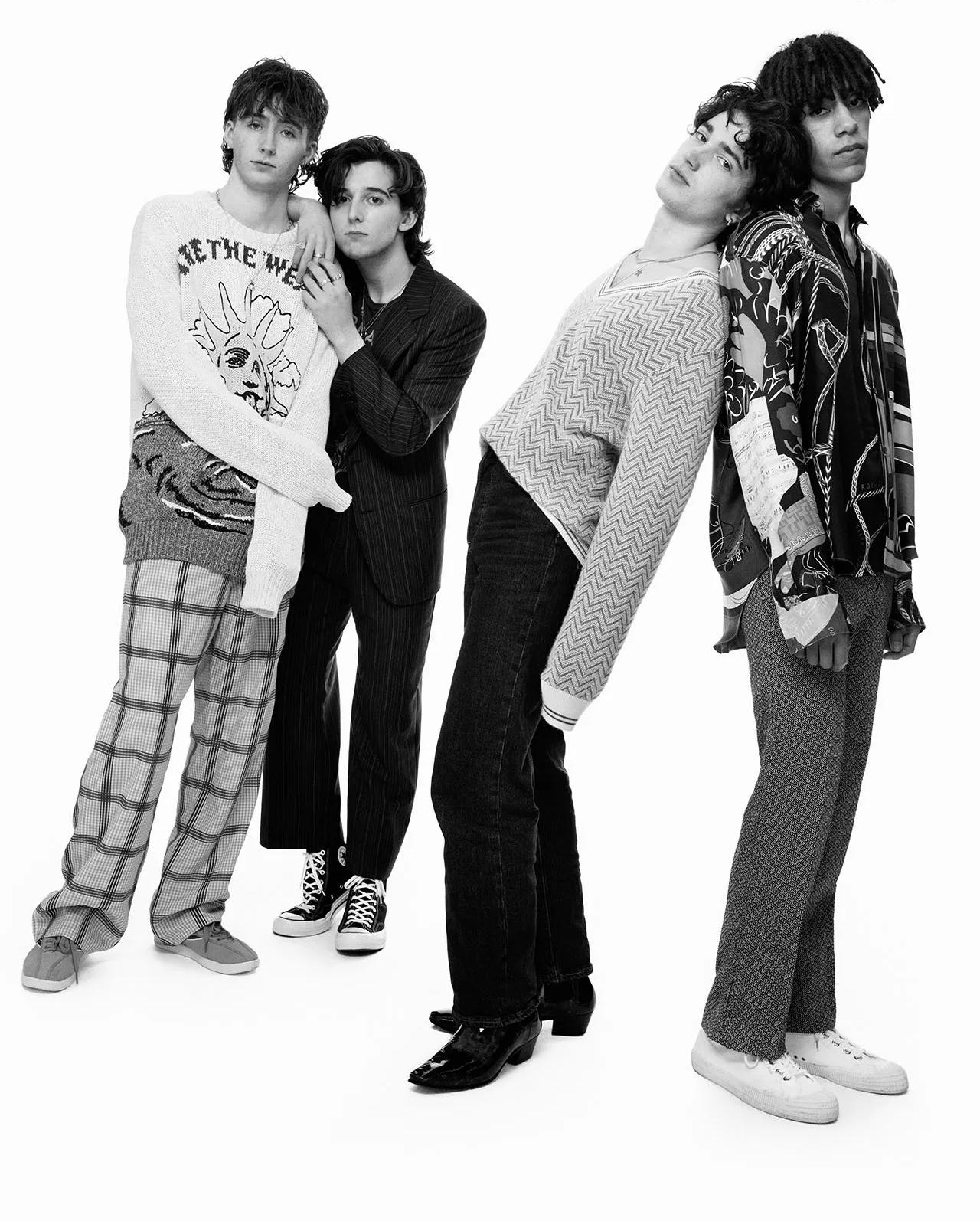 By Emmanuel Gittins
By Emmanuel Gittins
An Inside Look at Inhaler’s Journey and Unique Sound
12
Q: What challenges have you faced as a new band trying to break into the music industry?
A: Having to adjust to this knew life. Finding a balance between work and our lives was hard but we pushed through.
Q: How did your band first come together, and what inspired you to start playing music together?
A: We’ve known eachother since gradeschool, we all were into the same music and decided one day to just try the whole band thing out.
Q: What’s the process like for creating your songs? Do you start with lyrics, a melody, or something else entirely?
A: It changes constantly, each song is a different story. Every story starts and end differently.
Q: You recently released a new album. Can you tell us a little about the inspiration behind the project?
A: We wanted this album to really tell our story, the type of guys we are. The things we’ve gone through and how we’ve dealth with it. It’s about or life, the good and the bad.
Q: What’s next for your band in terms of touring, recording, and future projects?
A: We’re currently practicing for our tour that’s in the next few months and we’re very excited.


Q: What advice would you give to other up and coming musicians trying to make it in the industry?
A: Please do not give up, the journey is very rough. You will go through a lot, but if it’s meant to be and you really believe, it will happen.
13


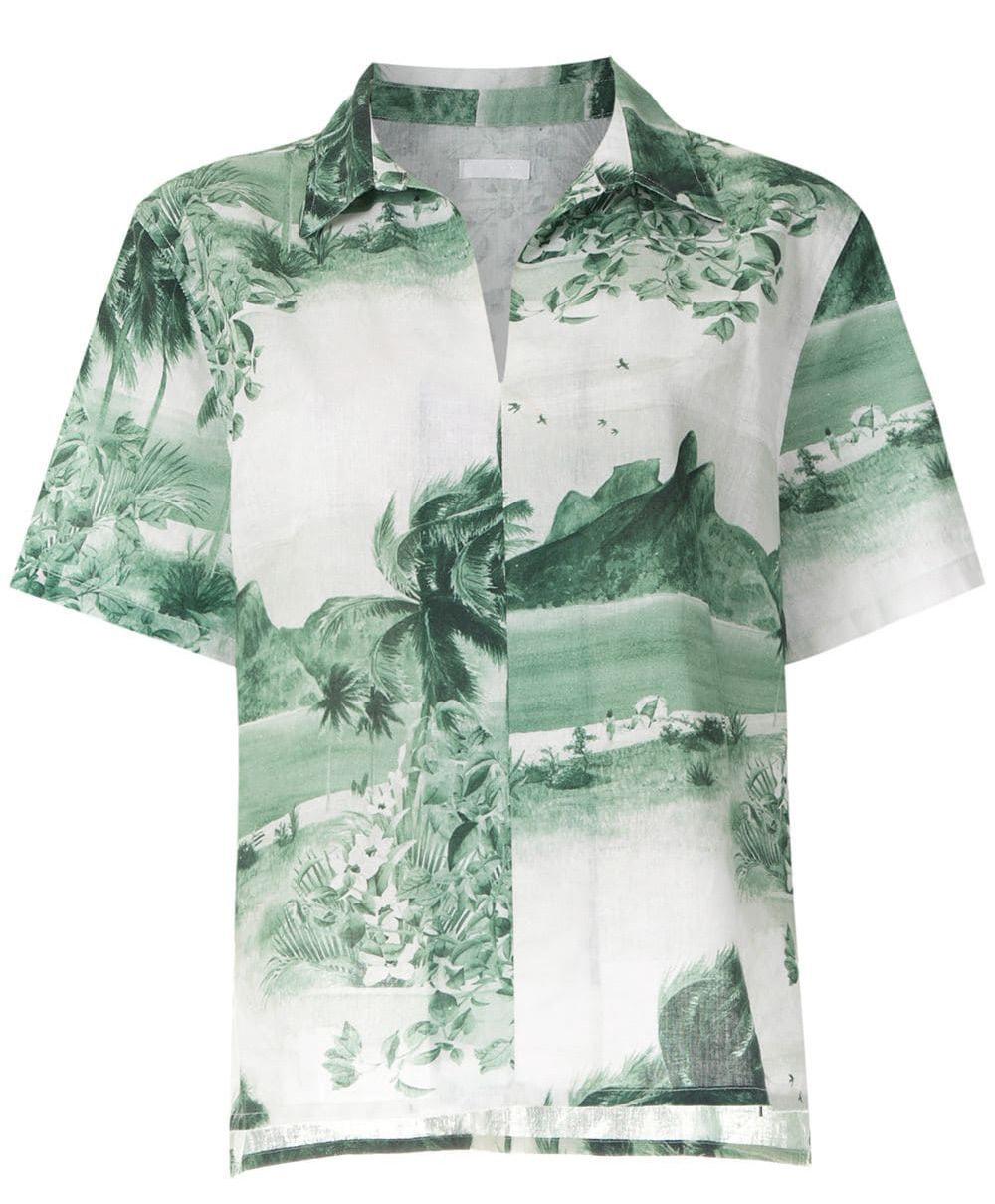


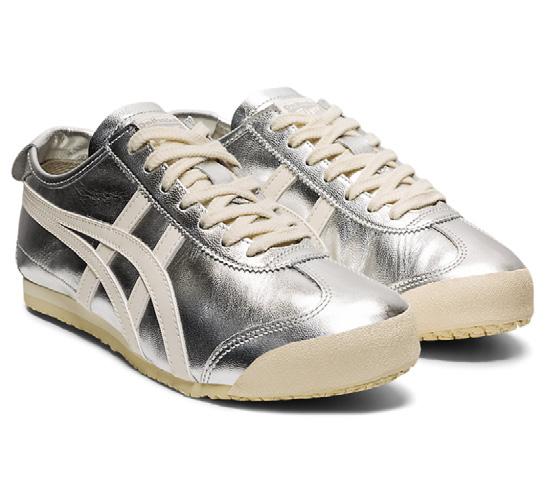

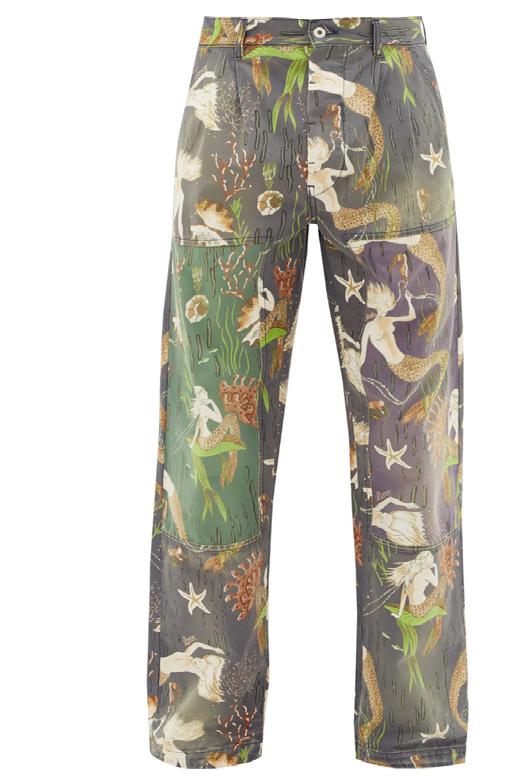
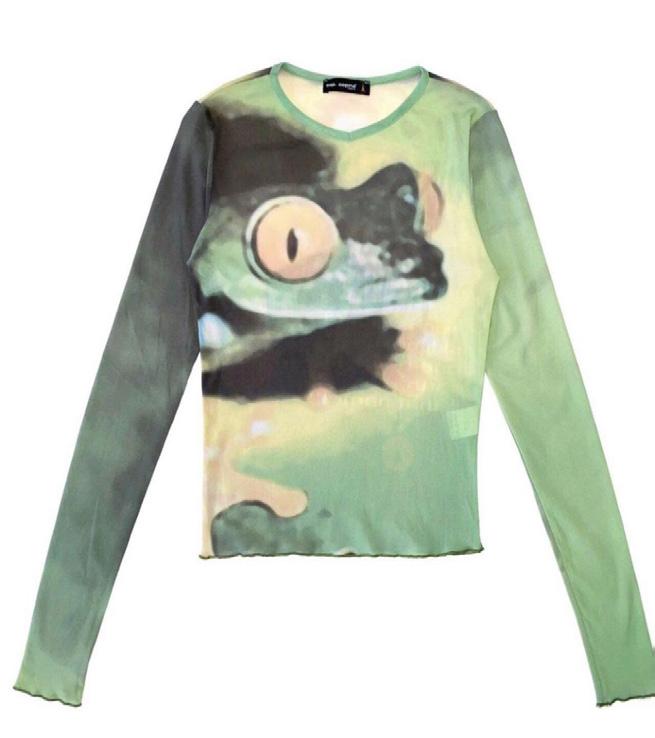




1 2 3 4 5 6 7 9 8 10 11 12 14
EDITOR’S PICKS:
Gemini’s Fashion Must Haves
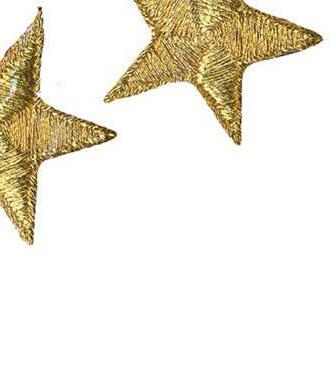
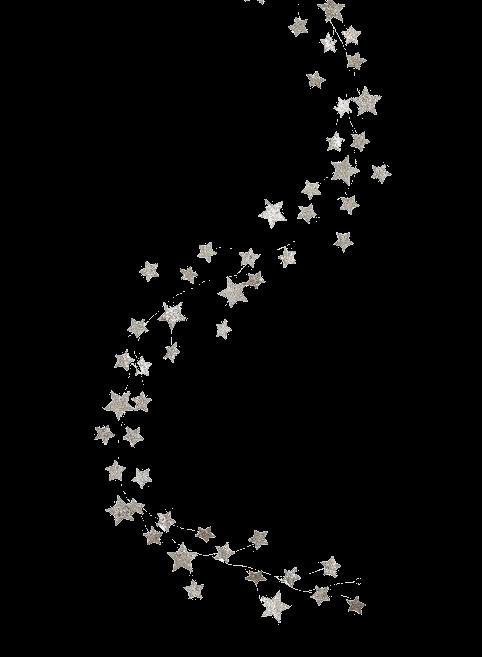
1 Osklen RJ print short sleeve shirt
$167
2 Vintage Vivienne Westwood
$347
3 Dsquared2 Short Dress
$190
4 ModeSens Linen Shirt
$83
5 LOEWE Men’s Ibiza Pants
$234
6 Cop Copine Mesh Frog
Longsleeve Shirt
$68

7 Ontisuka Tiger Mexico
66 Silver Shoes
$120


9 Christian Dior Black Bondage Logo Boots
$469
10 RealBooBear Ginger Resurrection Leggings
$38
11 Urban Outfitters Squared Toe Loafer
$83
12 Liquid Tiger Melt Shirt
$62
15
FASHION MEETS MUSIC: The Stylists Behind Your Favorite Singers
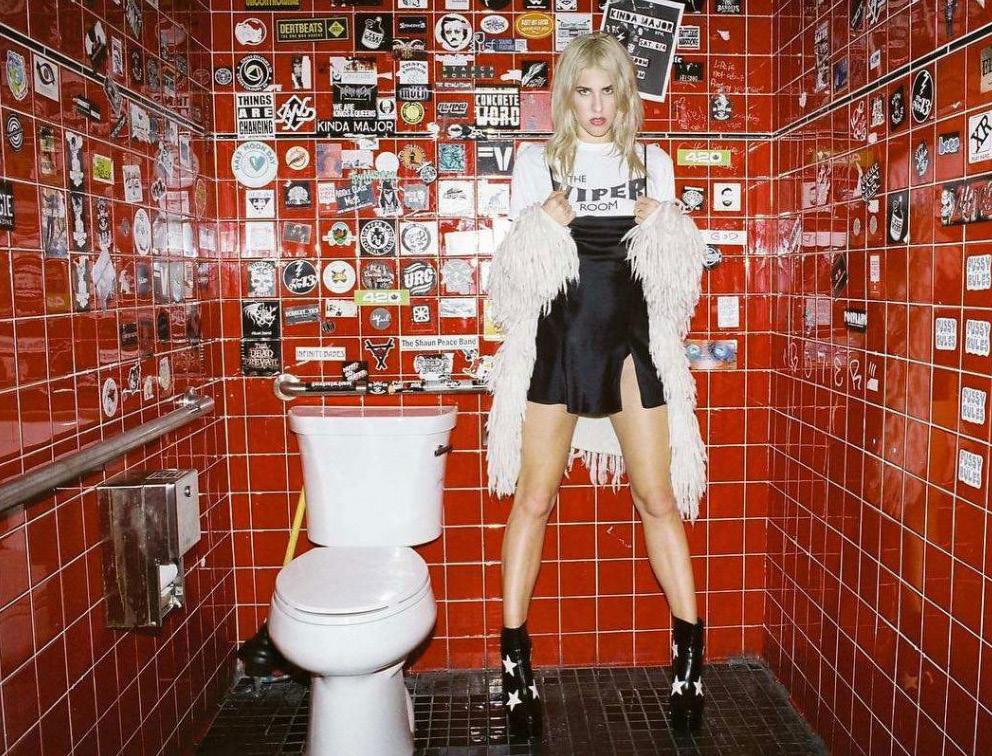
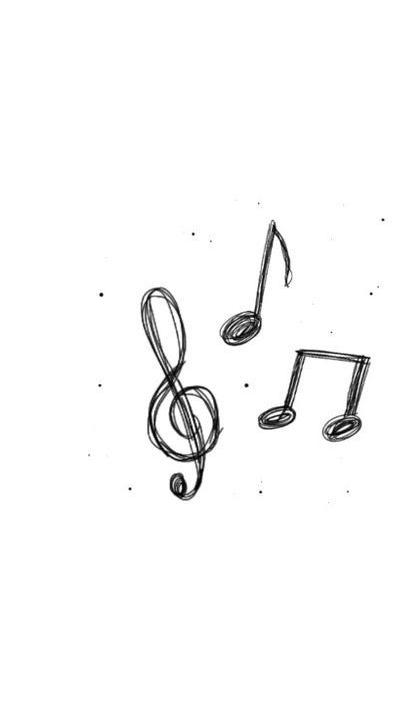 By Emmanuel Gittins
By Emmanuel Gittins

Zayn Malik, Issa Rae, Rita Ora, Winnie Harlow, some of the best-dressed celebrities, have all turned to Jason Rembert to style them for the red carpet. Rembert is known for his fresh and modern approach, and he has the accolades to prove it; he was named Stylist of the Year at the 2018 Harlem Fashion Row Awards and he’s a fixture on The Hollywood Reporter’s “Most Powerful Stylist of the Year” list. In 2019, the New York-based creative set his sights on a new role, announcing his first foray as a fashion designer.
Enter Aliétte, his clothing
line named after his late mother (Louisanne Aliétte) and 2-year-old daughter (Harper Aliétte). The brand made its red carpet debut on Rembert’s longtime client Issa Rae at the Critics Choice Awards. I immediately noticed her gown’s daring high slit and corseted bodice, which felt bold, confident, and utterly feminine. I couldn’t help but get excited for the full collection debut. After nearly a month of anticipation, Rembert introduced Aliétte with an intimate viewing on the Penthouse floor of the Standard East Hotel during New York Fashion Week. I found myself swooning yet again, this time over a red tulle dress, a blazer cinched by a twin-buckle
16
belt, and a mesmerizing yellow gown, modeled by Winnie Harlow and destined to end up on a red carpet before award season ends.
Q: Tell me a little bit about the inspiration behind your first collection. I read that you were inspired by Martinique, but how did that translate into the designs?
Jason Rembert: My mom used to always tell me about this place which was quite mystical and magical to me, growing up and hearing about it, and that place was Martinique. I wanted this first collection to be emotionally attached to it. When my mom passed away almost eight years ago, the only thing I kept from her was the passport of the travels that she did. Then as I did research on Martinique, I was inspired by early-1900s Martinique clothing, more specifically 1930s, 1940s Martinique clothing. The pieces were quite architectural and structural. They were big on prints and explored florals and texture. I knew that that was a time period which I wanted to explore within my own collection. As I did more research, I learned that Martinique was discovered in the 15th century by Christopher Columbus. The original name of Martinique, which most locals still call it today, is Madiana, which means island flowers, so that’s what I decided to call my collection.
Q: You have a very successful career as a celebrity stylist. You’ve accomplished really amazing things in that realm. So, why did you want to start designing?

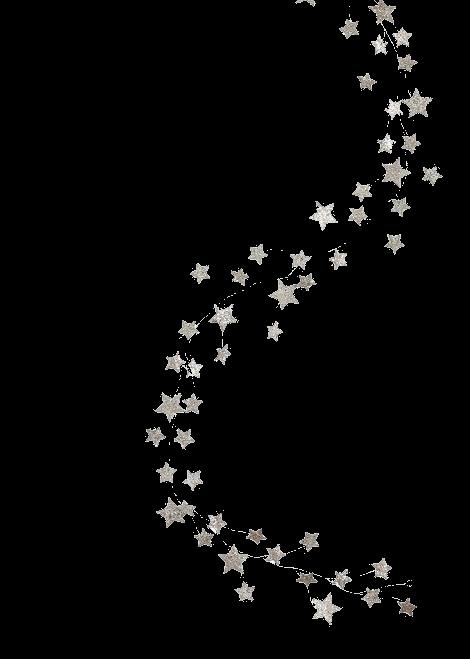
JR: A lot of times as stylists, we have to compromise with our art because we’re working with talent, and talent may have an opinion on what they want, or the director that you’re shooting the movie with or a video with may have an opinion, or when you’re shooting an editorial, the photographer may have a directive on what they want. So, a lot of times the art that I’m putting out in the world is a shared art. I’m
grateful to be a part of it, but I wanted to be able to put my own art in the world and for it not to be compromised. I felt like it was time.
Q: What advice do you have for emerging designers or stylists that are looking to break into the fashion industry?
JR: Intern, assist, make mistakes on other peoples’ dime, because it’s hard. It’s hard. Build relationships with people who are on the same level as you. Build together. Be a support system for one another. Keep going, even when it gets difficult, just keep going. Don’t give up. I have so many friends who gave up and in my mind, looking at it from the outside, I feel they were so close to being hugely successful. And they just gave up. Just know that you have a support system and you are loved. A lot of times you don’t know that you’re loved until you actually do it.
17
RISING STARS:

A Look Inside Entertainment’s Next Generation
 By Emmanuel Gittins
By Emmanuel Gittins
It’s a thrill to see a new performer come into a role, no matter the size, and embody a character convincingly enough to leave a lasting impression. The actors featured in our 2022 Emerging Talent Portfolio have given standout performances in TV, theater, film, and video games—often alongside A-listers with decades of experience. We reached out to them to talk about everything from their first big breaks to their upcoming projects. Here are the performers to keep an eye out for in 2023 and beyond.
Sekai Abenì (“Paper Girls”)
This Portland, Oregon, native shines in her first major onscreen role as the adult Tiffany in Stephany Folsom’s time-traveling adventure show “Paper Girls” on Prime Video, based on the comic book series by Brian K. Vaughan. The Juilliard graduate also recently premiered “Winter Citrus,” a short film and installation which she co-created with visual artist Devin T. Mays at Ars Nova in New York City.

Diego Calva (“Babylon”)
Ever since he won the best actor
award at the Havana Film Festival in 2015, Calva’s career has risen steadily. He landed a role on the last season of popular Netflix series “Narcos: Mexico” and will star in Damien Chazelle’s “Babylon” opposite Margot Robbie and Brad Pitt, which premieres Dec. 23.
(“Avatar: The Way of Water”)
Jack Champion
This young actor’s career is skyrocketing. Between a leading role in all three of James Cameron’s upcoming “Avatar” sequels, starring opposite Liam Neeson in Nimród Antal’s “Retribution,” and joining the cast of Matt Bettinelli-Olpin and Tyler Gillett’s “Scream 6,” this small-town kid is about to make a big splash in the industry.
(“My Policeman”)
David Dawson
What this British actor loves most about performing is studying human behavior and stepping into someone else’s shoes. He recently starred in Janus Metz’s espionage thriller “All the Old Knives” for Prime Video. He plays young Patrick in Michael Grandage’s adaptation of Bethan Roberts’ “My Policeman” opposite Harry Styles premiering Nov. 4.
18
Stephanie Hsu (“Everything Every-
where All at Once”)
The recipient of the Breakthrough Artist Award at the 2022 Hamptons International Film Festival, Hsu continues to generate buzz for her star turn in Dan Kwan and Daniel Scheinert’s “Everything Everywhere All at Once.” Next, she’ll play a lead role in an as-yet-untitled Lionsgate comedy directed by Adele Lim and produced by Seth Rogen and Evan Goldberg’s Point Grey. She’ll also star on Rian Johnson’s upcoming Peacock series “Poker Face” opposite Natasha Lyonne, and will reunite with her “Everything Everywhere” co-star Michelle Yeoh on Disney+’s “American Born Chinese.”
Madeline Wise (“So Help Me Todd”)
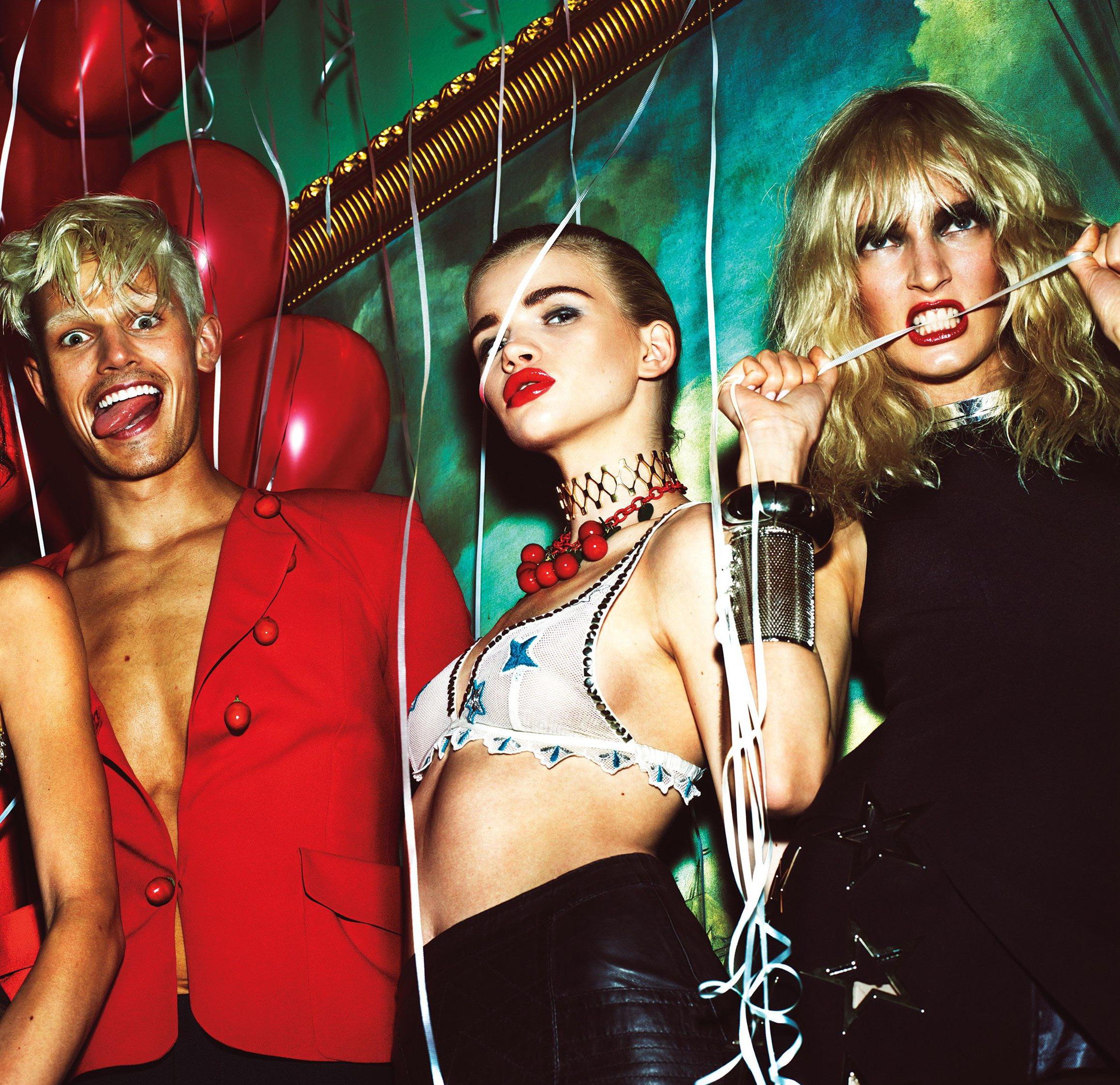
Wise stars on Scott Prendergast’s CBS comedy series “So Help Me Todd” opposite Marcia Gay
Harden and Skylar Astin. She is a scene-stealer as Allison, Todd’s successful sister. Her previous TV credits include Paramount+’s “Star Trek: Picard,” Freeform’s “Single Drunk Female,” and HBO’s “Curb Your Enthusiasm” and “Crashing.” She recently starred in Sophia Silver’s coming-of-age indie “Over/Under” and Noah Hutton’s mystery–sci-fi feature “Lapsis.”
Jaylin Webb (“Armageddon Time”)
This newcomer is quickly establishing himself as a highly sought-after young actor. He stars in “Armageddon Time” opposite Anthony Hopkins, Jeremy Strong, Repeta, and Anne Hathaway. Webb also just wrapped a supporting role in Chinonye Chukwu’s “Till,” starring Danielle Deadwyler and Whoopi Goldberg.
19
THE PARTY SCENE: The Journey to the Perfect Soiree
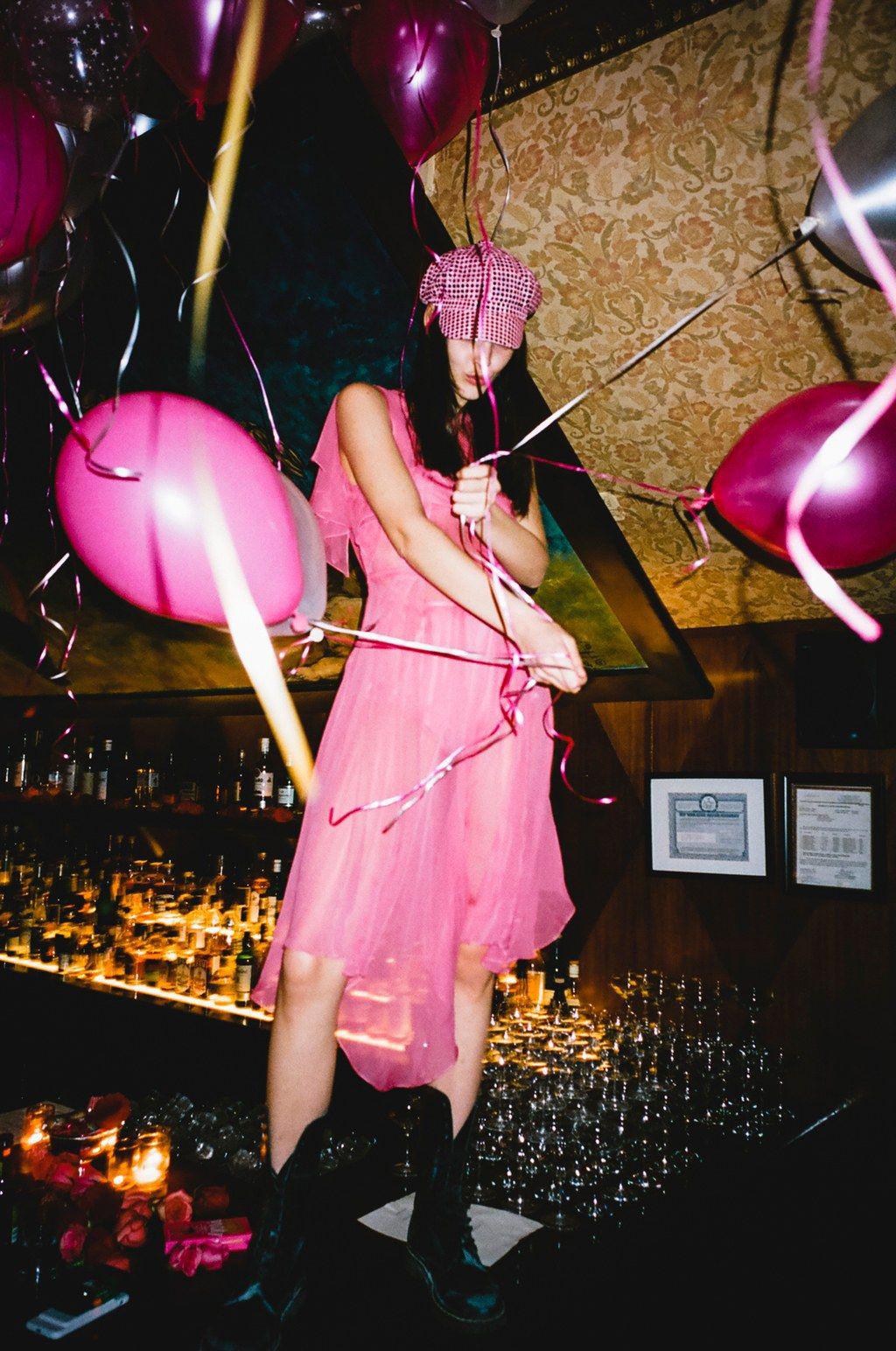 By Emmanuel Gittins
By Emmanuel Gittins
From milestone birthdays and 10-figure weddings to baby showers and just-because dinners, Colin Cowie has mastered the art of throwing an unbelievable party. In fact, the renowned event planner is so well-known for his extravagant to-dos for top stars and the elite that he’s considered somewhat of a celebrity himself.
Cowie’s recent gigs include planning Ben Affleck’s and Jennifer Lopez’s wedding at Affleck’s estate in Georgia; a US$4 million engagement party at a California vineyard for a couple in their 20s; and a US$1 million wedding in Monte Carlo for 37
guests. He has a team of 20 fulltime employees who help bring his vision to fruition.
What’s the secret to hosting a memorable event?
Cowie: You want to “wow” and engage all the senses. By that I mean you need extraordinary food, attentive, intuitive service, and a stunning setting. A wellstocked bar and great music are also key. These are the basics, but in every knockout event, there are surprises that the client doesn’t expect. That could mean a fireworks show, performance, or drone show, which is very popular at the moment.
What are the top trends for events today?

Cowie: Destination events are the biggest one. My clients want to host parties everywhere except where they live. They want the special, and a different destination offers them that. In the last year and coming up this year, some destinations for my events include New Zealand, Paris, Cannes, the Costalegre coast in Mexico, Tuscany, Lake Tahoe, and rural farms throughout the U.S.
Another trend is that people want cuisine for their events from known chefs. It’s not enough to have a high-end caterer—you need a Mich-
20
elin-starred chef. I’m now turning to chefs such as Gabriel Kreuther and Jean-Georges Vongerichten to provide the food for my parties.
Also, using performance art such as music and dance like burlesque is catching on as is having headline entertainment. I hired the band Earth, Wind & Fire for two events last year, for example,
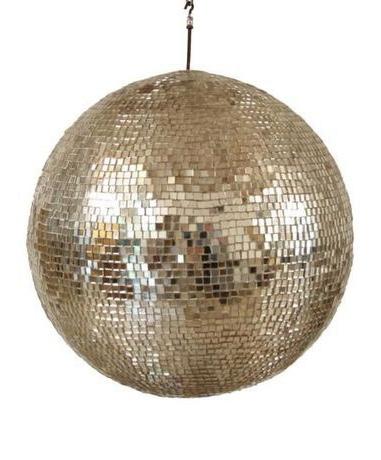

and have events coming up this year with Maroon 5 and Andrea Bocelli.
Can you explain your process when you’re planning a significant event?
Cowie: Timewise, I need nine months to a year to plan a big party, but I have events that I’ve pulled off in three months. The most important part is to find an incredible venue and pick the date. From there, you need a big-picture idea or theme—Burning Man, say, or the Roaring 20s. Once you have this, you can make those specific creative decisions such as what kind of décor, music, food, invitations and entertainment you want.
Can you talk about your foray into design?
Cowie: Design is a natural exten-
sion of my event planning. As a planner, my job is to walk into a space and visualize how it can become a stage for that perfect event. Being a designer is no different. I’ve always dabbled in it in an informal way and made it an official business during the pandemic.
10Cubed is one of the several private clubs that has opened in New York recently and part of the proliferation of private clubs globally. What sets it apart?
Cowie: The 100th-floor setting on one of the tallest residential buildings in the world is a big differentiating factor. The views from the club are unsurpassed—you can see from Central Park to Harlem, from New Jersey to Brooklyn and from Times Square to the Statue of Liberty. And you’re surrounded by water on three sides.
21





















 By Emmanuel Gittins
By Emmanuel Gittins





















 By Emmanuel Gittins
By Emmanuel Gittins




 By Emmanuel Gittins
By Emmanuel Gittins


 By Emmanuel Gittins
By Emmanuel Gittins








